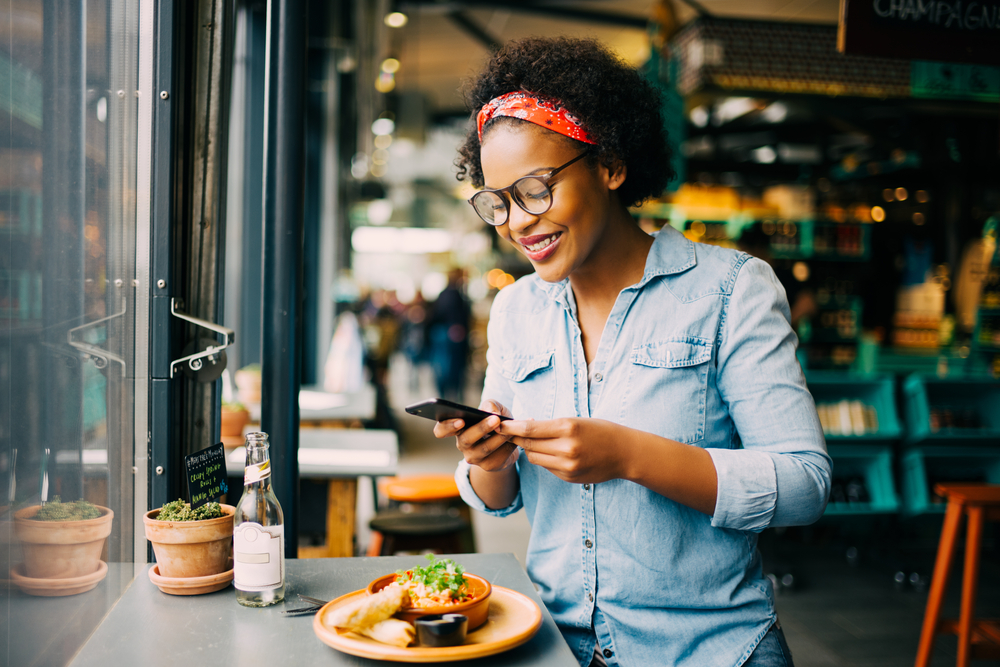- Design industry shaping loyalty programs
- Integrate easily and go live quicker
- Deliver hyper-personalized consumer experiences
Blue Rewards from Al Futtaim Group Shares Loyalty Success Stories and Evolution. Watch Podcast >
Capillary Announces 2nd Annual Captivate 2025 Summit: Transforming Loyalty Management with New AI Tech Read more >

The F&B business is one of the toughest markets to be in. On one hand, you have rapidly rising rental, labour and raw material costs, and on the other, fickle and highly demanding customers who expect the best dining experience every time. And to top it all off, you have aggregators eating into your already declining margins.
To stay afloat and thrive in this dynamic and competitive market, restaurants will need to keep up with the latest F&B industry trends by adopting new-age technology to elevate the dining experience through faster, more efficient service, streamlined kitchen operations, real-time customer relationship management, omnichannel engagement and innovative digital experiences across multiple formats.
Brands like Luckin Coffee and Dominos Pizza are leading the way in this new technology-driven, digital-first F&B business model. And the results speak for themselves: Luckin Coffee is set to increase its number of locations from 2,000 to more than 4,500 by the end of 2019. And more than 60% of Domino’s US sales in 2018 came via digital orders, and the pizza maker achieved its 30th straight quarter of same-store sales growth and saw its stock rise 22% in a turbulent market.
Much like the transformation of retail from being a transaction-driven to experience-driven model, dining out is quickly becoming more than mere eating. Today’s connected customers expect a series of delightful micro-moments right from the table reservation (through an app or website) to leaving the restaurant. Whether they will return and become loyal customers is entirely dependent on how well a restaurant is able to craft these moments while incorporating elements of fun, surprise and entertainment. In short, serving good food is merely not enough anymore and restaurants should look at leveraging new-age technology like AR, VR and other interactive digital interfaces to create these unique moments.
As customers get used to personalized interactions in other industries like health care, beauty and retail, they will come to expect the same from their favourite restaurants. Brands can leverage the customized F&B trend in multiple ways like recommending dishes based on previous online/offline customer interactions, building a rich customer profile that incorporates personal preferences, allergy information etc, ‘build-your-own-dishes’, or simply personalized messages on the food using stamping or embossing techniques.
Self-ordering kiosks are being hailed as the secret to the success of QSR chains and it has already proven highly effective in improving customer experience, reducing labour costs and increasing sales during peak hours. A self-service solution is essentially a digital interface that allows in-store customers to submit orders, pay for it and skip the long waiting lines. It’s also fairly easy and cost-effective to implement as the components comprise of a tablet, bill acceptor and card swipe module. These ordering interfaces can also be synced to be your CRM to offer personalized menus/offers and also create cross-sell/upsell opportunities. However, before following this F&B trend blindly, bear in mind that a self-ordering kiosk is likely to be effective only for QSR chains where the focus on getting the orders out as quickly and efficiently as possible.
The Maharashtra government and the Institute of Chemical Technology have already signed an agreement with U.S.-based non-profit Good Food Institute establish a Centre for Excellence in Cellular Agriculture. The institute plans to setup a greenfield lab by the end of 2019 and expects to offer tasting tests of lab-grown meat by early 2020. Proponents of the technology list several health and environmental benefits – the meat is slaughter-free, free infections of salmonella and e coli, not injected with multiple doses of antibiotics and leaves a lot less carbon footprint. This is one F&B trend that’s set to take off in the near future.
With deforestation, human rights violations and climate change grabbing headlines almost every day, consumers are increasingly demanding more sustainable and humane products and ingredients. From grass straws to drinking cups made from palm leaves, bamboo tableware and chemical-free kitchen cleaning products, several F&B brands are actively moving towards a plastic-free, sustainable living for a better future. Consumers today not only want to know where a brand’s product, ingredients, etc. are sourced from but also how the product was made, how it got there and the assurance of quality. Technology plays a vital role in mapping the entire lifecycle of a product, and communicating it in a transparent way is critical for building brand loyalty as well as word of mouth.
We’re seeing a large number of restaurants — both fast-casual and fine dining — jump on the food and beverage trends of implementing new interfaces and touchpoints to engage customers and offer easy access to the brand in new ways. In addition, ordering via apps has grown exponentially. These applications have definitely changed the consumer dining experience and provide better customer convenience. Mobile apps now allow consumers to view a restaurant’s menu anywhere and place an order so that it’s ready when they arrive. And the technology has benefited restaurant owners too – giving them more time to prepare food, optimize their operations and increase table turnover. Also, since most pre-order apps have online payment features, restaurant owners can sell their meals in advance.
An F&B brand’s success is heavily hinged on Average Order Values (AOV) and repeat purchases. However, a generic, one-size-fits-all reward program doesn’t cut it anymore. To boost sales and repeat visits, a restaurant loyalty program needs to be highly personalized, omnichannel and value-driven. According to Evergage, 88 percent of marketers reported noticed signified improvements through personalization and more than half report a lift greater than 10%. In fact, Panera, the US-based bakery cafe’s loyalty program generated $1 billion in sales in 2018. Moreover, personalized loyalty programs tend to increase the average bill values and enhance guest satisfaction levels. For this reason, it’s important that F&B brands partner with vendors that can implement a unique, value-driven loyalty program that rewards guests not merely for transactions but for reviews, social sharing and referrals.
Stay on top of the latest F&B trends, test-drive our award-winning F&B Loyalty Program Software, Get a Demo
Restaurants deal with a highly dynamic inventory comprising primarily of fast-moving and perishable goods. To reduce wastage, predict demand and ensure great service, it’s critical for them to get their inventory management right. An Artificial Intelligence system can connect the dots between diverse factors like guest preferences, social media engagement, brand mindshare, product shelf life, global F&B trends and even the weather to help you streamline your supply chain and prevent stockouts.
Technology adoption amongst F&B brands is expected to skyrocket in the coming years. However, the key focus point in product and solution implementation should be its relevance, impact on overall customer experience and improving convenience. If not brands, run the risk of riding an expensive hype train that’s headed to no man’s land.

November 13, 2018 | 4 Min Read
No matter where you look, there’s no avoiding news of the

December 17, 2015 | 4 Min Read
When a retail business is trying to go digital, it goes thro

January 17, 2018 | 4 Min Read
Retailers once had it easy. Little competition, loyal custom